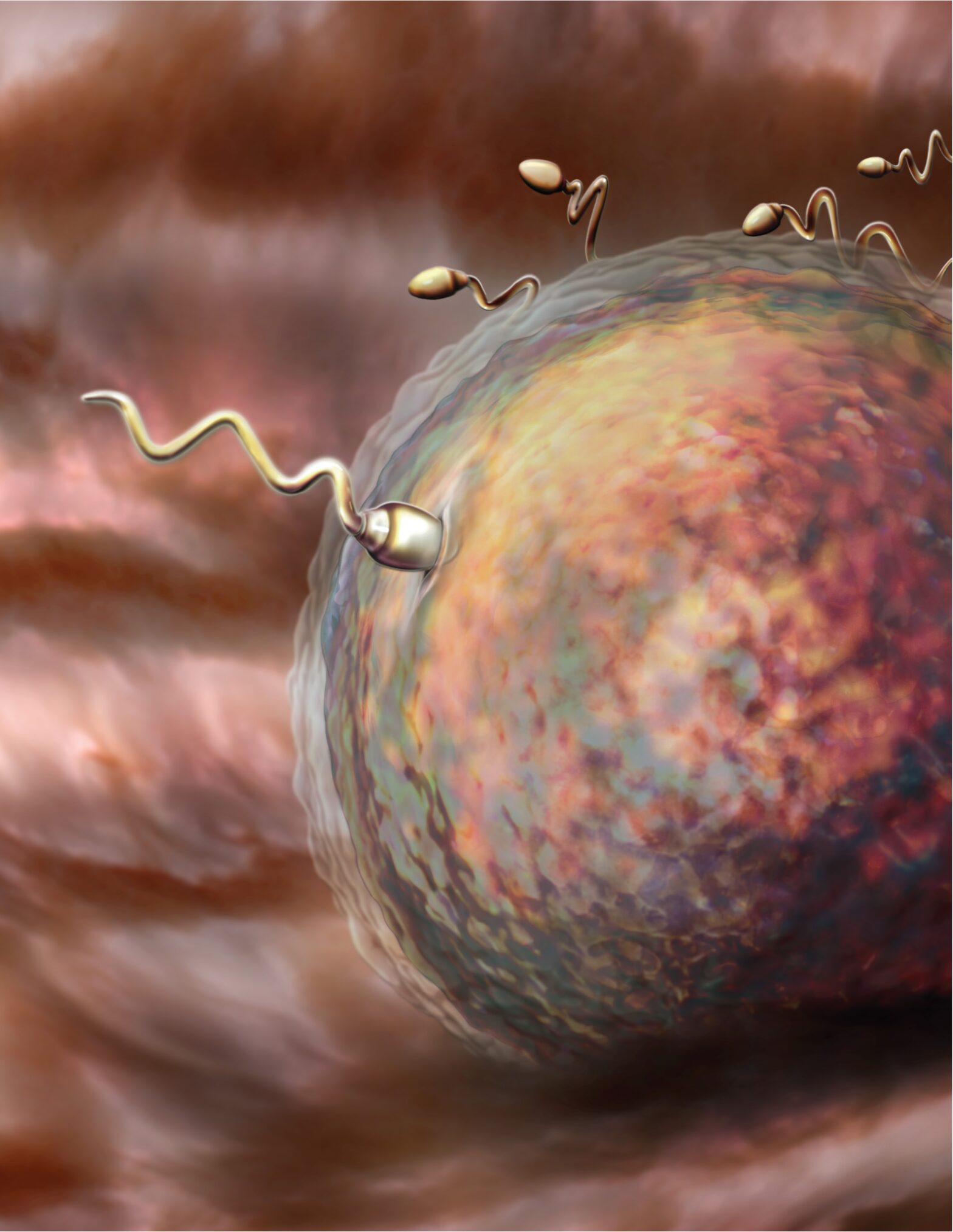While semen contains millions of sperm, fewer than 1,000
sperm will make it to the egg. The head of each sperm
contains the man’s genetic material, called DNA, and the
tail is used for movement. Each sperm is propelled forward
toward its destination—the egg—by the whipping motion
of its tail. Many sperm will attempt to penetrate the egg,
but only one sperm will be able to fertilize the egg.
Essential Facts
• Under the right conditions and lighting, the human egg may be visible to the naked eye. The egg is about 25 times larger than a single sperm.
• Sperm, which are produced in the testicles, take about 70 days to reach maturity.
• The average number of sperm released during sexual intercourse ranges from 50 to 500 million.
• The tip of the sperm contains enzymes to break through the outer layer of the egg. Once the egg has received a single sperm, it immediately creates a barrier to prevent penetration by additional sperm.
• In addition to sperm, semen contains fructose, enzymes, citric acid, free amino acids, prostaglandin, potassium, and zinc.

